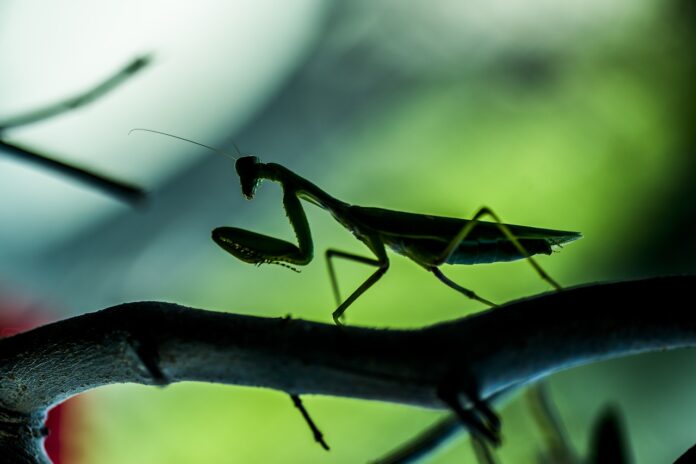Mantises, often referred to as “praying mantises” due to their distinctive posture, are fascinating insects known for their predatory habits and unique behaviors.
Facts About Mantises:
- Diverse Species: There are over 2,400 species of mantises worldwide, with the majority found in tropical and subtropical regions.
- Masters of Camouflage: Mantises are experts at blending in with their environment. Some species resemble leaves, flowers, or even sticks, making them nearly invisible to predators and prey.
- Predatory Nature: Mantises are carnivorous and primarily feed on other insects, but larger species have been known to catch small vertebrates like lizards, frogs, and even birds.
- Ambush Hunters: Mantises are sit-and-wait predators. They remain motionless, waiting for prey to come close before striking with lightning-fast reflexes.
- Raptorial Forelegs: Mantises have specialized front legs equipped with spines to grasp and hold onto their prey securely.
- Stereoscopic Vision: Mantises have large, compound eyes that give them excellent depth perception, crucial for accurately judging the distance to their prey.
- Head Rotation: Mantises can rotate their heads 180 degrees, allowing them to scan their surroundings without moving their bodies and revealing their presence.
- Cannibalistic Mating: In some species, the female mantis may eat the male after or even during mating. This behavior, known as sexual cannibalism, provides the female with extra nutrition.
- Mantis Egg Cases: Female mantises lay their eggs in a foamy substance that hardens into a protective case called an ootheca, which can contain dozens to hundreds of eggs.
- Overwintering Eggs: In colder climates, mantis eggs survive the winter in their protective ootheca, hatching in the spring when temperatures rise.
- Insect Allies: Mantises are beneficial to gardeners and farmers as they help control pest populations by feeding on insects that damage crops.
- Mimicry: Some mantises mimic other insects, such as ants or wasps, to avoid predators or to get closer to their prey.
- Complex Courtship: Male mantises perform intricate courtship dances to avoid being eaten by the female before mating.
- Short Lifespan: Mantises generally have a short lifespan, with most species living only about a year from hatching to death.
- Winged Adults: While nymphs (juvenile mantises) are wingless, adult mantises typically have wings and can fly, although they are better known for their terrestrial hunting.
- Nocturnal Predators: Many mantis species are primarily active at night, using the cover of darkness to hunt and avoid their own predators.
- Impressive Reflexes: A mantis can strike its prey in just 50-70 milliseconds, faster than the blink of an eye.
- Global Distribution: Mantises are found on every continent except Antarctica, thriving in a variety of habitats, from rainforests to deserts.
- Cultural Symbolism: In some cultures, mantises are considered symbols of patience and mindfulness due to their calm and deliberate movements.
- Natural Enemies: Mantises have several predators, including birds, bats, and other larger insects like spiders and hornets.
- Self-Defense: When threatened, mantises may spread their wings, raise their forelegs, and make themselves look larger to scare off predators.
- Selective Diet: Mantises are selective feeders and will often choose their prey based on size, preferring insects that they can easily overpower.
- Mantis Shrimp Confusion: Despite the name, mantis shrimp are not related to mantises. They are marine crustaceans with a similar predatory strike.
- Mantis Religiosa: The European mantis (Mantis religiosa) is one of the most well-known species and is often seen in gardens across Europe and North America.
- Long Antennae: Mantises have long, thin antennae that they use to sense their environment, detect prey, and communicate with other mantises.
